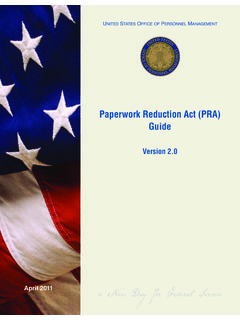Transcription of by Jacques S. Gansler and William Lucyshyn
1 COMMERCIAL-OFF-THE-SHELF (COTS): DOING IT RIGHT by Jacques S. Gansler and William Lucyshyn _____ This research was partially sponsored by a grant from The Naval Postgraduate School September 2008 CENTER FOR PUBLIC POLICY AND PRIVATE ENTERPRISE SCHOOL OF PUBLIC POLICY UMD-AM-08-129 Report Documentation PageForm ApprovedOMB No. 0704-0188 Public reporting burden for the collection of information is estimated to average 1 hour per response, including the time for reviewing instructions, searching existing data sources, gathering andmaintaining the data needed, and completing and reviewing the collection of information.
2 Send comments regarding this burden estimate or any other aspect of this collection of information,including suggestions for reducing this burden, to Washington Headquarters Services, Directorate for Information Operations and Reports, 1215 Jefferson Davis Highway, Suite 1204, ArlingtonVA 22202-4302. Respondents should be aware that notwithstanding any other provision of law, no person shall be subject to a penalty for failing to comply with a collection of information if itdoes not display a currently valid OMB control number. 1. REPORT DATE SEP 2008 2. REPORT TYPE 3. DATES COVERED 00-00-2008 to 00-00-2008 4. TITLE AND SUBTITLE Commercial-Off-the-Shelf (COTS): Doing It Right 5a.
3 CONTRACT NUMBER 5b. GRANT NUMBER 5c. PROGRAM ELEMENT NUMBER 6. AUTHOR(S) 5d. PROJECT NUMBER 5e. TASK NUMBER 5f. WORK UNIT NUMBER 7. PERFORMING ORGANIZATION NAME(S) AND ADDRESS(ES) University of Maryland,School of Public Policy,Center for Public Policyand Private Enterprise,College Park,MD,20742 8. PERFORMING ORGANIZATIONREPORT NUMBER 9. SPONSORING/MONITORING AGENCY NAME(S) AND ADDRESS(ES) 10. SPONSOR/MONITOR S ACRONYM(S) 11. SPONSOR/MONITOR S REPORT NUMBER(S) 12. DISTRIBUTION/AVAILABILITY STATEMENT Approved for public release; distribution unlimited 13. SUPPLEMENTARY NOTES 14. ABSTRACT see report 15. SUBJECT TERMS 16. SECURITY CLASSIFICATION OF: 17.
4 LIMITATION OF ABSTRACT Same asReport (SAR) 18. NUMBEROF PAGES 83 19a. NAME OFRESPONSIBLE PERSON a. REPORT unclassified b. ABSTRACT unclassified c. THIS PAGE unclassified Standard Form 298 (Rev. 8-98) Prescribed by ANSI Std Z39-18 ii The Center for Public Policy and Private Enterprise provides the strategic linkage between the public and private sector to develop and improve solutions to increasingly complex problems associated with the delivery of public services a responsibility increasingly shared by both sectors. Operating at the nexus of public and private interests, the Center researches, develops, and promotes best practices; develops policy recommendations; and strives to influence senior decision-makers toward improved government and industry results.
5 IiiTable of Contents Table of Contents .. iii Executive Summary .. iv I. Introduction .. 1 Roadmap ..6 II. COTS Policy .. 7 A. The Perry Memo .. 7 B. Federal Acquisition Streamlining Act (FASA) .. 8 C. The Clinger-Cohen Act (CCA), Public Law 104-106 .. 9 D. Federal Acquisition Regulation (FAR) .. 10 E. DoD Directives and Instructions .. 11 F. COTS Policy 12 III. COTS Integrated into Major Weapon Systems .. 13 A. Acoustic Rapid COTS Insertion 13 B. E-2 Hawkeye Airborne Early Warning Aircraft .. 17 C. Lessons Learned .. 23 IV. A COTS Weapon System Light Utility Helicopter (LUH) .. 28 A. Introduction .. 28 B. The Acquisition.
6 29 C. The LUH Contract 30 D. Lessons 32 V. Major COTS Software Systems .. 37 A. Defense Integrated Military Human Resources System (DIHMRS) .. 37 B. Business Systems 47 VII. Findings and Conclusions .. 55 Reference List .. 60 Appendix The Perry Memo .. 64 69 About the 70 iv COMMERCIAL-OFF-THE-SHELF (COTS): DOING IT RIGHT by Jacques S. Gansler and William Lucyshyn Executive Summary Introduction In the twenty-first century, the United States will likely encounter a wide-range of threats, such as those posed by terrorists, rogue states and other non-state actors all of whom are taking full advantage of globally available, high-tech commercial systems ( , from night vision devices, through secure cell phones, to satellite photos).
7 At the same time, technology is changing more rapidly than ever before, and the DoD must learn to embrace the fact that it no longer holds a monopoly on all military-relevant technology (many of the information-intensive innovations result from commercial activities). Furthermore, the rising costs of domestic commitments, such as Social Security and Medicare, coupled with the growing budget deficits, will create an inevitable downward pressure on the DoD budget. These changes have created an urgency for transformation within the defense establishment. We believe this necessary defense transformation will be heavily dependent upon the development of net-centric systems-of-systems; the determination to achieve lower costs, faster fielding and better performance; and a realization of the potential benefits of globalization and use of commercial technology.
8 Greater use of Commercial-Off-The-Shelf (COTS) systems and components is one strategy that can enable achieving the required DoD transformation, and help to ensure American military success in the twenty-first century. Commercial-Off-The-Shelf (COTS) is a term for software or hardware that is commercially made and available for sale, lease, or license to the general public and that requires little or no unique vgovernment modifications to meet the needs of the procuring agency. Because of their rapid availability, lower costs, and low risk, COTS products must be considered as alternatives to in-house, government-funded developments.
9 For forty years, there have been many recommendations made from inside the government to further encourage the use of commercial goods in federal acquisitions yet adoption often continues to meet resistance. We believe that expanding the use of COTS will help the military to transform more quickly, using proven technology adapted from the commercial marketplace allowing for substantial cost savings, with fewer schedule delays, and improved performance characteristics, across numerous programs, DoD-wide. COTS Policy Although, there are examples of COTS being used as far back as the 1970s, the advent of the information age (with the explosion and widespread use of commercial technological advances) and the growing DoD emphasis on information systems heralded a shift in acquisition policy to one that strongly favors the use of COTS products.
10 Considered a seminal document in setting recent COTS policy, the Perry Memo was written in 1994 by the then-Secretary of Defense, William J. Perry. In the memo, Perry called for the military to increase the purchase of commercial items and systems. He also called for the increased use of commercial practices and specifications. The requirement to consider and use COTS was officially enacted into law as part of the Federal Acquisition Streamlining Act (FASA) in 1994, and is also addressed in the Clinger-Cohen Act. COTS and COTS policies are also contained in the Federal Acquisition Regulation, the Defense Federal Acquisition Regulation, the basic DoD Acquisition Policy (5000 series), and several other Instructions, Directives, and statutes.
















